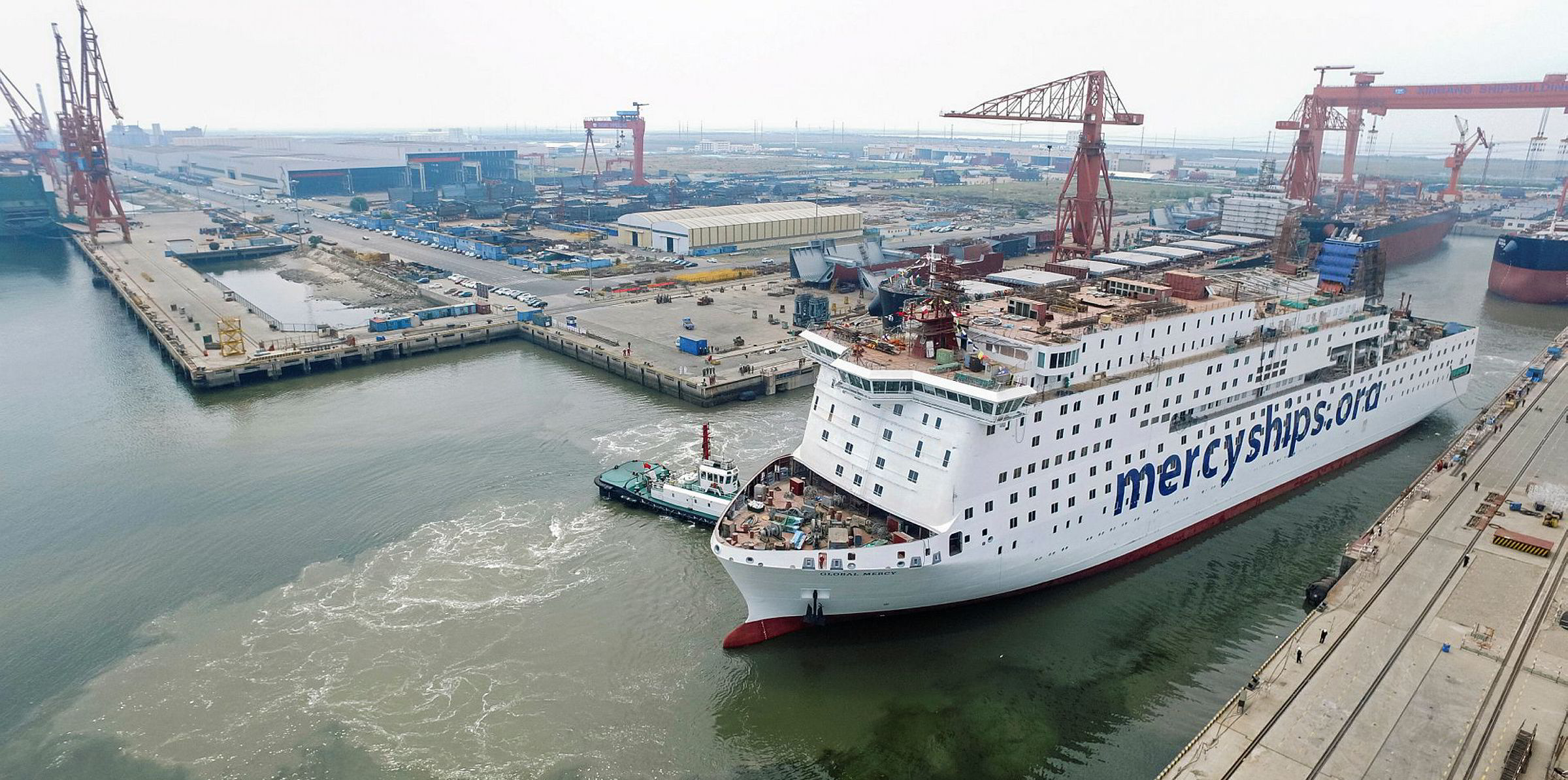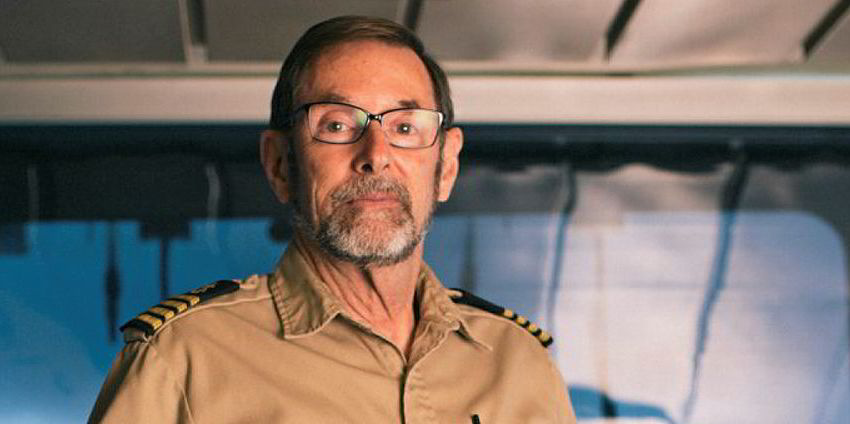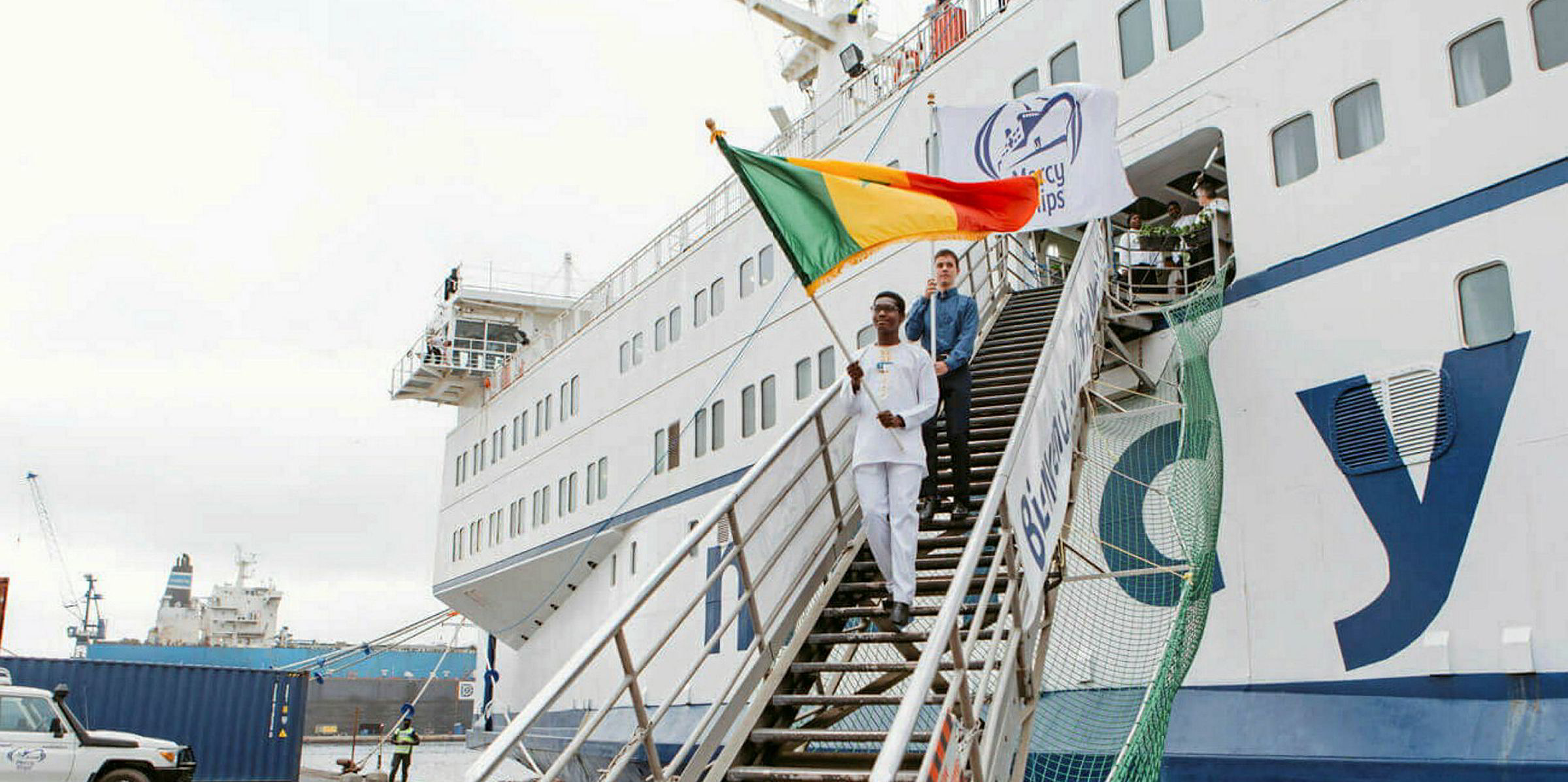The world’s largest civilian hospital ship is nearing delivery from Tianjin Xingang Shipyard in northern China five years after its keel was laid.
The 37,000-gt newbuilding Global Mercy, costing $200m to build and equip for deployment in 2021, will more than double the medical capacity of Mercy Ships to deliver free operations to people in African countries.
The vessel will join the charity’s existing hospital ship — the Africa Mercy, a train ferry converted in 2007. Both ships will provide basic but life-changing surgical and dental procedures.
Stena RoRo has been responsible for the design, contracting and construction oversight of the vessel, which has two decks of operating rooms and hospital wards in place of car decks.
Per Westling, chief executive of Stena RoRo, said the Swedish company modified one of its concept designs from the RoPax-class of passenger and freight vessels for international voyages into a pure passengership with hospital capabilities.
The 174-metre-long Global Mercy will have six operating rooms and accommodate up to 950 volunteers, including surgeons, maritime crew, cooks and teachers. It will be equipped with first-class training facilities, including equipment for virtual reality training and other care simulation.
Senegal bound
Mercy Ships is planning to return the Africa Mercy to Dakar in Senegal in 2021, where it was when Covid-19 hit and had to leave a couple of months early. The ship has undergone repairs and maintenance in Tenerife since then.

“We will go back to Senegal because there are several hundred people there who we promised a chance at a new life and we can’t just leave them hanging,” Mercy Ships executive director Bryce Wagner told TradeWinds.
Mercy Ships has been providing medical care on vessels for more than 30 years, visiting nearly 600 ports in more than 70 countries and helping more than 2.5m people.
It stays up to 10 months in beneficiary countries, where it also helps build medical infrastructure by training local health professionals.
The two ships will later meet up, and crew and medical staff will transfer to the Global Mercy to allow the older vessel to go for a more major refit.
“Our current scenario is that both ships will be fully functioning in 2022,” Wagner said.
Hospital operations place very specific requirements on hull design and layout of a ship’s interior, but despite being more than double the size of the Africa Mercy, the Global Mercy is only 4m wider and 24m longer — so it can still fit into cramped port berths.
However, the new ship is a lot taller with 12 decks, up from eight, Mercy Ships senior consultant of marine operations Jim Paterson said. He worked on the older vessel’s conversion and said he started to daydream about what they would do if they could build a new ship from scratch.
Problems identified on the Africa Mercy were mainly that the hospital was not big enough once local doctors were brought in for training, and storage and social space was limited. Container loads of materials need to be sent each month from the US and Europe, and shortages are quickly felt if there is any hitch in the supply chain. Some cabins house six people.
Bigger and better
Fortunately, Paterson and his colleagues’ hopes for a bigger and better ship closely matched Stena’s vessel concept, and plans could be hatched that led to the order for the Global Mercy.
Each year, 16.9m people around the world die from a lack of access to surgical care, 93% of whom stem from Africa. Over the Global Mercy’s 50-year expected lifespan, it is estimated that more than 150,000 lives will be changed on board through surgery alone.
Westling, who visited the Africa Mercy when it was stationed in Madagascar in 2017, said: “It feels very satisfying to be able to contribute with our expertise in this project, which will make such a big and important difference to so many people in the poorest parts of the world.
“Mercy Ships is doing a fantastic job.”






